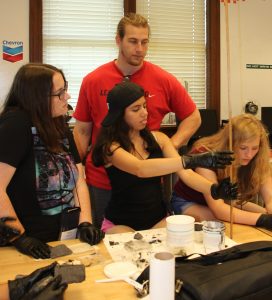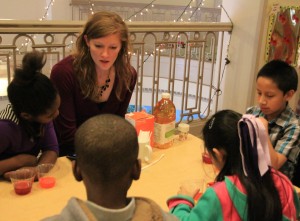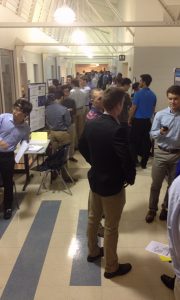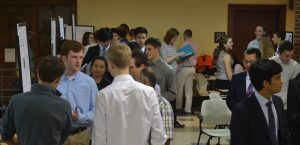The Hutchens group aims to provide learners at all ages with exposure to highly deformable materials in order to increase physical intuition of the soft “sticky-world” that governs small scale interaction of macromolecules in arenas ranging from cellular environments to cutting edge device manufacturing to bio-inspired actuation.
This aim is accomplished through first encounters with elastomer and gel testing at the grade school level, independent research projects at the undergraduate level, and incorporation of the latest results in soft materials mechanics into undergraduate classwork.
Outreach

A former student-athlete (Basketball, Oklahoma State Univ.), Prof. Hutchens seeks activities that meld sports and science. The aim is to illustrate the relevance of soft materials mechanics in a confidence-boosting environment for young women. It is hoped that these experiences show athletes alternate ways to pursue an interest in sports. To this end, Prof. Hutchens developed ‘Sole Solution,’ an activity that mimics fabrication of shoe sole materials, elastomer and elastomer foam.

Opening of the Air Maze at the Orpheum Children’s Science Museum, January 28, 2015. Professor Hutchens introduced local 2nd graders to the solid/liquid behavior of Jell-O (See story here.)
Teaching
Fall 2014, 2015, & 2016, 2017, 2020, 2021, 2023 – Thermodynamics, ME200

In Prof. Hutchens’ thermodynamics class, students explore the wider implications of energy systems via a poster project. Groups of 3-4 students select a system on which perform an energy balance and then discuss the impact of their system in an out-of-classroom context. The class operates in a ‘flipped’ format in which students are guided through lectures via in-class guidance through concepts, derivations, and problems.

Spring 2017, 2019, 2020, 2021, 2023 – Experimental Stress Analysis, TAM 456
Hands-on activities characterize the work in this class, which introduces students to four important methods for characterizing stress and strain fields experimentally: resistive strain gages, particle tracking, photo elasticity, and digital image correlation. Students develop data analysis skills using Matlab and ImageJ and gain experience in putting the techniques into practice.
Fall 2018, 2022 – Rubbery Polymer Micromechanics, TAM 598
